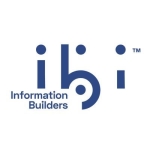
Mule ESB Valuable Features
The features most impactful for my API management include the low-code, no-code concept. We have batch processing for handling large amounts of dataset. They have policy implementation, which is very easy, along with straightforward API designing.
Mule ESB's data transformation supports integration needs effectively. They have their own language called DataWeave, which helps transform data and is efficient enough to handle any kind of transformation.
View full review »RC
Richmond Cosay
Solutions Architect at Metrobank
The best features of Mule ESB are that it's very robust and solid; I find that even our legacy systems go well with ESB.
We just started to explore Mule ESB's API management capabilities, and I find it very useful in our day-to-day operations.
Mule ESB is a scalable solution.
Mule ESB is a stable solution.
View full review »The best features of this solution are that everything we get into a single platform, whether it's integration, API, or data modeling; everything is available in one platform. It's a hybrid, including cloud and on-premise solutions with good connectivity and good connectors.
From the benefits of using Mule ESB, we could reduce the manual tasks to 50% in one to two years. The cost is still something we are trying to make lower because we see some advantages when we move from point-to-point integration to API-led connectivity. We have seen a lot of reusable assets, so the cost is reduced. Ultimately, we want to see how it's transformed into business revenue; that's what we are still looking into.
View full review »Buyer's Guide
Mule ESB
October 2025
Learn what your peers think about Mule ESB. Get advice and tips from experienced pros sharing their opinions. Updated: October 2025.
871,358 professionals have used our research since 2012.
The most valuable feature of MuleS ESB is its API-led architecture. It provides a unique, user-friendly, and scalable architecture for hosting APIs. The platform also gives you visibility into how applications are set up.
The API management capabilities are exemplary. You can apply security policies to most applications, monitor logs, and get analytical data on request reception, response generation time, associated APIs, endpoints, and inbound and outbound messages.
View full review »VD
Venkat Raj Dudyala
Technical Architect at a tech services company with 51-200 employees
The most valuable features of Mule ESB are DataWeave, which is the core of MuleSoft, and batch processing methods, such as batch processing for bulk loads and parallel processing for asynchronous tasks.
View full review »The most beneficial features of Mule ESB are the control plane and runtime plane. Its centralized control plane has been the most useful for distributed deployments. Mule ESB is also faster and easier to configure than other solutions.
View full review »The connectors help to connect with a variety of applications. We have used connectors for Salesforce and Dynamics CRM. The file processing features are useful.
View full review »Most of our use cases are for Salesforce. So, the connectors for Salesforce have been really helpful. They've made development two times faster.
View full review »Mule ESB has a user-friendly design, and everything is in one place. The API and architecture are popular right now. Also, MuleSoft has a large and supportive online community.
View full review »We utilize data transformation capabilities extensively. For complex cases, we employ the SSLi engine, whereas for simpler ones like healthcare or response data, such as EDI 270 or 271. We prefer to use an external XRT engine instead of handling it within the ESB for ease of management. For smaller data transformations, we rely on DSPS.
View full review »The most valuable features of Mule ESB are its ease of use, documentation, ease to adapt to newer security and vulnerabilities, and a lot of help available. Additionally, there is a lot of flexibility, many patches available, and they provide APIs. They are a market standard.
View full review »This tool has exceptional API management and integration connectors in addition to multiple out of the box connectors.
The UI is good. From a development perspective, it's pretty easy and pretty intuitive for the developers to work with. We have fresh graduates who have started picking up MuleSoft. Its user interface is pretty intuitive.
View full review »It is easy to use and easy to understand.
It is easily deployable and manageable. It has microservices-based architecture, which means that you can deploy the solution based on your needs, and you can manage the solution very easily.
View full review »The solution's drag-and-drop interface and data viewer helped us quite a lot.
View full review »It's open source, and there are a lot of community resources. Mule ESB makes it easy to connect to other software applications.
View full review »UK
Uday-Kiran
Not specified ( Team Lead ) at ADP
The HTTP, SAP and RabbitMQ connectors that we use are very easy to connect. The language for writing the transformations is also very simple. This is a useful solution. The solution doesn't require much code writing and we can develop APIs very easily.
I'm not using ESB directly. It is the integration layer, so it's running under the hood. However, the conversion and transformation performance is excellent. Anypoint Enterprise Security is also solid.
When we bought the solution, it was an in-the-cloud or PaaS solution. Because of that, I didn't have to take care of the infrastructure, which was a big plus.
It was pretty fast to develop APIs on this platform, which is something I liked about it. So, the time to value was pretty good.
View full review »We can do very fast development of the orchestrations of MuleSoft. The design patents which we use for integration patents are also a nice feature.
The solution also offers multiple deployment options. I like the endpoint time manager and the access policies.
MU
Misabh Ulhaq
Software Engineer at ADM
The most valuable feature is DataWeave. It allows for the transformation of data, for example to JSON or from JSON. It's very powerful.
There are also many connectors available, which is nice.
View full review »VB
Badrakh V
Information System Architect at Astvision
Mule ESB is a very easy-to-use and user-friendly solution.
View full review »I like that Mule ESB provides fast and good technical support.
View full review »AB
Amit Behere
Software Engineer at a tech services company with 51-200 employees
The best feature for me was the easy connectivity and easy integration. In comparison, if you go through code license for APN, it will require more configuration or more code but if you're going to Anypoint Studio and using Mule ESB, you just drag and drop the connectors, configure the credentials and complete your process as per your requirements. The product helps me a lot to integrate quickly.
View full review »The most valuable feature is that it's programmer-friendly, so it's very easy to develop APIs.
View full review »HS
Hashim Sharif
Co Founder - Data Engineering Head at Sadeeem Knowledge
I like the graphical interface and the number of connectors. The solution is easy to maintain.
View full review »VR
VenkatRaj
Tech Lead at V-Soft
The cloud and integration abilities are most useful allowing us to use applications such as Salesforce and DataWeave. Additionally, the exception handling is good. We have experienced zero downtime since moving to this solution.
View full review »PS
Palavesam Subbiah
Senior Consultant at a tech services company with 1-10 employees
The features that I have found most valuable are that the product is updated regularly and Mule's framework. Overall the performance is good.
For our current solution, I think what Mule provides out-of-box is a sufficient product.
View full review »Mule ESB is quite lightweight.
Everything runs in Java, which is a useful feature.
View full review »The most valuable feature for Mule is the number of connectors that are available. There are a lot of connectors to different systems so if you want to connect to SAP or Salesforce, there are readily available connectors that are of great help. It saves a lot of time using this system.
The level of integration that this product offers is quite far ahead of the competition.
They have a very strong developer community, interacting at an informal level on a daily basis.
View full review »The transformation and the data format are the features that I like the most.
View full review »The connectivity the solution provides is excellent. There are often too many systems that we have to integrate and this helps with that.
The platform itself is very good.
View full review »SC
Safouen Chibani
Developer JAVA/JEE, Mule ESB at a computer software company with 11-50 employees
The most valuable feature is the Salesforce integration.
The drag and drop feature makes it very easy for transformation, and to use the Anypoint platform.
It is very easy to manage the flow using Anypoint.
View full review »JJ
JustinJames
IT Consultant at a financial services firm with 5,001-10,000 employees
The most valuable feature of Mule ESB is data transformation, i.e. our interacting with different systems and orchestrating for our business needs.
For example, a customer has liabilities in loans and credit cards, maybe some other mortgages, like four liabilities which are split into four systems.
I need to expose an API that can tune the data from four systems and expose it into one single API. For that, I have to call our services and complex security policies.
Mule ESB loads complex web service security policies. Sometimes, we have some FLAC files or maybe some messaging services. We need to consume those components and expose them as an API, which is nothing but some adjacent format, i.e. a REST API.
The most powerful feature is DataWeave, which is a powerful language where data can be transformed from one form into another.
View full review »Connectors: It has many connectors and components that really help to complete the development very quickly.
View full review »The architecture based on events: It has several connectors which allow integration from external and internal applications of the company.
View full review »- Routing
- Enrichment
- DataWeave
- Choice of connectors
- Light weight containers
- Packaging and deploying
- API management
- Scalability and load balancing
NT
Naveen Tak
Senior Integration Consultant at a tech services company with 51-200 employees
- We can use Java expressions anywhere in the flow
- Provides API support out-of-the-box
- API management can be done using RAML
SC
Surendranath C
Principal Architect And Management Council Member at a tech services company with 51-200 employees
There are many already defined endpoint components such as HTTP, JMS, FTP, etc., and these are the main tools for communicating with various services. By having these, developers just need to concentrate on the functionalities instead of making modules to talk to other services.
View full review »SD
samir douichi
Solution Architect at Aractronic
- Deployment strategies: Mule supports a wide variety of deployment strategies.
- SOA architectural style: Mule can embrace the architectural style and SOA practices in place where it’s deployed.
- Focused on higher-level concerns: It deals extensively with all the details of integration and provides a wide range of connectors. It has the ability to be an integration framework open to all sorts of protocols.
- They have comprehensive and up-to-date documentation, a subject on which the vendor has made huge progress recently.
The most valuable features are the connectors, DataWeave, and the way it simplifies the application development and deployable files.
Connectors:
- Being a Java developer, I have experienced how much logic and coding one needs to put in while accessing the database.
- With the DB Connectors developer, I just need to place the query, and in some cases the drivers, if Mule doesn't provide out-of-the-box support.
- With the HTTP Connector and the APIkit router with RAML, managing the resources and handling is made easy.
- With Mule's expected release in Q3 of 2017, generating RAML would also be made easy.
DataWeave:
- With good knowledge of DataWeave operators, anything can be achieved in a couple of lines of code, which otherwise would be time consuming in Java.
- Salesforce connector
- Enterprise JDBC
- SAP connector and other connectors like FTP and SFTP
- Parallel processing support
- JMS integration
- Writing your complex business logic as a simple workflow which can be understood by not so technical people
- Hot deployment of those workflows, which helps in automation and self-learning/healing.
- Provides a variety of connectors: SalesForce, Twitter, SAP, Facebook, and WebService consumer. Most of them come for free with the Community Edition.
- Async/concurrent execution of services within a flow
- Logging
DataWeave: It allows for complex mappings using a simple DSL (Domain Specific Language).
View full review »TP
TejasPurohit
Co-Founder & Director at a tech services company with 11-50 employees
- Service Mediation: This is an abstraction layer in between the service consumer and the service provider.
- Message Routing: This feature consumes messages. It filters, enriches, and performs necessary operations on a message. It redirects them to the appropriate target endpoint, based on a certain decision making criterion.
- Data Transformation: The process of converting/transforming data or information from one format to another.
DH
Diego Hidalgo
QA Manager at Tandicorp
Flexibility and high performance.
I can perform integrations with any environment and
scenery as well as growth in apps integration, is an agnostic tool architecture
ie can generate components on different architectures are JEE or .Net.
Mule ESB has a lot components and tools that apply integration patterns making it easier to development without much knowledge of patterns
View full review »I am impressed with the product's connectors and scalability.
View full review »I like that it's user-friendly. Compared to other ESBs, I find it easier to use. I like it better than other ESBs. I like the connectors, which make calling the APIs through the routers easier.
View full review »Buyer's Guide
Mule ESB
October 2025
Learn what your peers think about Mule ESB. Get advice and tips from experienced pros sharing their opinions. Updated: October 2025.
871,358 professionals have used our research since 2012.


























